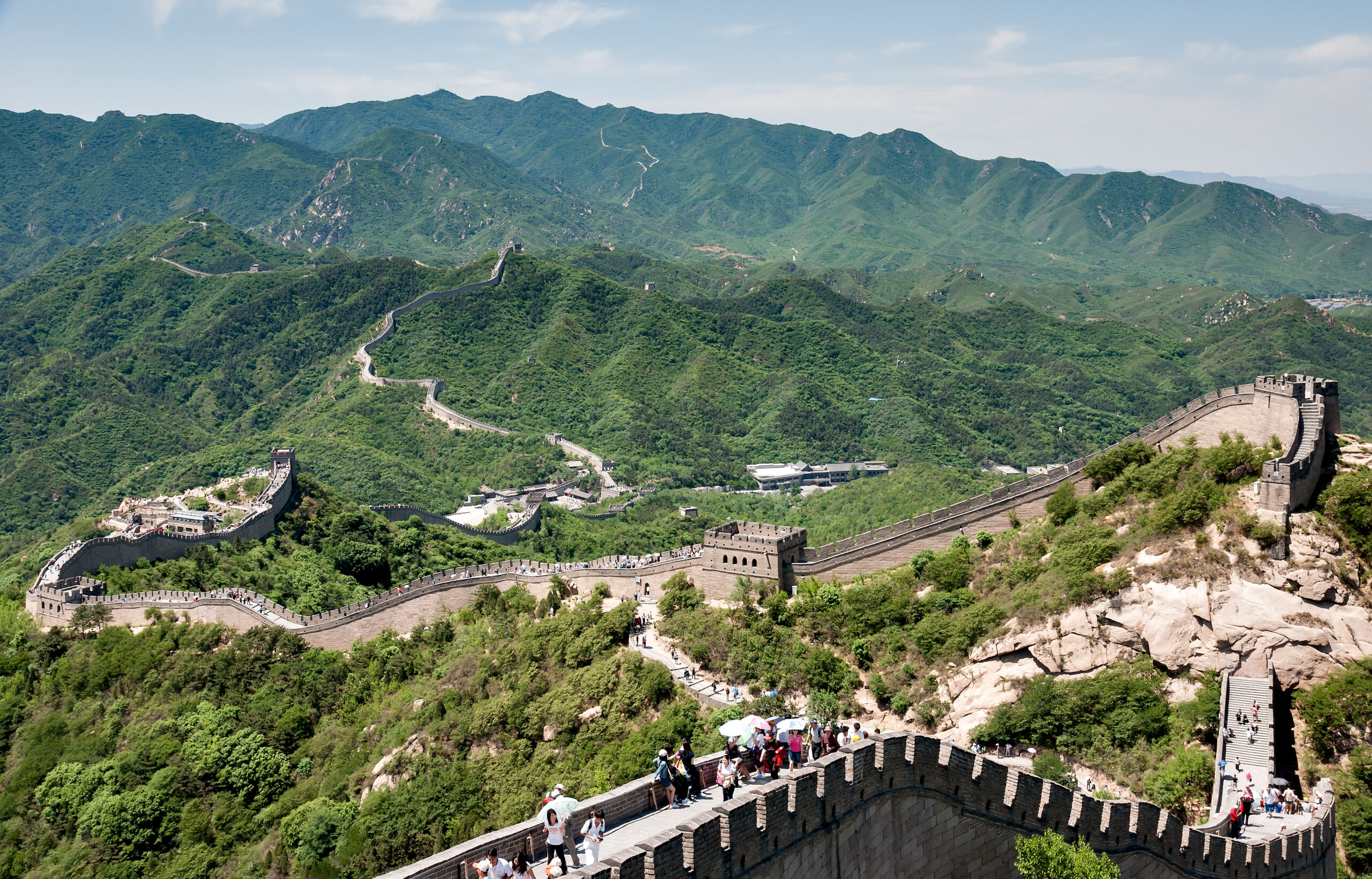The China miracle explained – Buenos Aires Herald
The China miracle explained Buenos Aires Herald


China’s Approach to Global Development

China has made significant progress in reducing poverty, lifting 800 million people out of poverty within its own borders. Now, China aims to extend its developmental approach to the developing world by focusing on trade, infrastructure investment, and technology transfer. This approach is being implemented through both entrepreneurial and state-backed initiatives such as the Asian Infrastructure Investment Bank and the Belt and Road Initiative.
China’s efforts have had a substantial impact on global poverty reduction. Over the past 40 years, the number of people in China living below the International Poverty Line of US$1.90 per day, as defined by the World Bank, has decreased by nearly 800 million. This accounts for approximately three quarters of the global reduction in extreme poverty. At China’s national poverty line, the number of poor individuals decreased by 770 million during the same period.
China’s Contributions to Development
- Providing financial assistance: China has offered billions of dollars in financial aid to developing countries through loans, grants, and debt relief. This support has been utilized for various projects including infrastructure development, education, and healthcare.
- Infrastructure investment: China has made substantial investments in infrastructure projects in developing countries, such as roads, railways, and ports. These investments have improved connectivity and trade, leading to economic growth.
- Technology transfer: China has shared its technological advancements with developing countries, enabling them to enhance their manufacturing and production capabilities. This has resulted in job creation and economic growth.
- Sharing expertise: China has shared its expertise in areas such as agriculture, public health, and disaster management with developing countries. This assistance has helped address crucial needs in these nations.
China’s role in global development is becoming increasingly significant, whether it is viewed positively or negatively. The future evolution of China’s role remains uncertain, but it is clear that China will continue to be a major player in global development.
While some may criticize China’s motives, there is no denying that its policies have had a positive impact on millions of lives. China is now seeking markets with significant growth potential by lifting people out of poverty and transforming them into consumers.
Concerns have been raised about the exchange of raw materials for high-value goods, especially when it leads to debt dependence. However, if the assumed debt is sustainable and the benefits contribute to improving living standards for the entire society, it should be considered a net positive.
A World of Insufficiency
If the Belt and Road Initiative is part of a broader effort to develop infrastructure, it can be beneficial. The infrastructure being built can facilitate economic activity by creating logistical networks that connect different regions. Infrastructure development does not necessarily result in dependency; instead, it can promote a free market and improve access to goods and services that are highly desired by society.
The majority of people alive today live in a world of insufficiency, lacking adequate food, security, housing, education, healthcare, women’s rights, and clean water. They are desperate to escape this situation, just as China has done. While they may have concerns about Chinese government policies or the transactional attitudes of Chinese entrepreneurs, these concerns are often of little importance to countries striving to overcome poverty.
After World War II until the 1980s, the non-aligned world was predominantly impoverished and disconnected from the means of production in a world where nearly 50% of global GDP was in the United States. Today, China offers these countries the opportunity to build their own future without depending on the US-led West.
The US challenge to China’s dominance should not hinder the rest of the world from progressing if China presents a better alternative for those determined to rise. Ultimately, free competition should determine the outcome, as described by Adam Smith in his renowned work, “The Wealth of Nations.” It is a market where individuals acting in their own self-interest decide what is necessary. In this China-US world, where an autocratic society competes with a democratic-driven order, it is up to the people of each nation to freely choose.
SDGs, Targets, and Indicators
| SDGs | Targets | Indicators |
|---|---|---|
| SDG 1: No Poverty | 1.1 By 2030, eradicate extreme poverty for all people everywhere, currently measured as people living on less than $1.90 a day | – Number of people in China with incomes below $1.90 per day has fallen by close to 800 million over the past 40 years |
| SDG 8: Decent Work and Economic Growth | 8.1 Sustain per capita economic growth in accordance with national circumstances and, in particular, at least 7 percent gross domestic product growth per annum in the least developed countries | – China’s investment in infrastructure projects in developing countries has helped improve connectivity and trade, boosting growth |
| SDG 9: Industry, Innovation, and Infrastructure | 9.1 Develop quality, reliable, sustainable and resilient infrastructure, including regional and transborder infrastructure, to support economic development and human well-being, with a focus on affordable and equitable access for all | – China’s infrastructure investment in developing countries has improved connectivity and trade |
| SDG 17: Partnerships for the Goals | 17.2 Enhance global macroeconomic stability, including through policy coordination and policy coherence | – China’s financial assistance to developing countries through loans, grants, and debt relief has supported infrastructure development, education, and healthcare |
1. Which SDGs are addressed or connected to the issues highlighted in the article?
SDG 1: No Poverty
The article discusses how China has lifted 800 million people out of poverty, highlighting the issue of extreme poverty and the progress made towards eradicating it.
SDG 8: Decent Work and Economic Growth
The article mentions China’s investment in infrastructure projects in developing countries, which has helped improve connectivity and trade, contributing to economic growth.
SDG 9: Industry, Innovation, and Infrastructure
The article emphasizes China’s infrastructure investment in developing countries, such as roads, railways, and ports, which has improved connectivity and trade.
SDG 17: Partnerships for the Goals
The article mentions China’s financial assistance to developing countries through loans, grants, and debt relief, highlighting the importance of partnerships for global macroeconomic stability.
2. What specific targets under those SDGs can be identified based on the article’s content?
– Target 1.1: By 2030, eradicate extreme poverty for all people everywhere, currently measured as people living on less than $1.90 a day.
– Target 8.1: Sustain per capita economic growth in accordance with national circumstances and, in particular, at least 7 percent gross domestic product growth per annum in the least developed countries.
– Target 9.1: Develop quality, reliable, sustainable and resilient infrastructure, including regional and transborder infrastructure, to support economic development and human well-being, with a focus on affordable and equitable access for all.
– Target 17.2: Enhance global macroeconomic stability, including through policy coordination and policy coherence.
3. Are there any indicators mentioned or implied in the article that can be used to measure progress towards the identified targets?
– The number of people in China with incomes below $1.90 per day has fallen by close to 800 million over the past 40 years, indicating progress towards eradicating extreme poverty (Target 1.1).
– China’s investment in infrastructure projects in developing countries has improved connectivity and trade, contributing to economic growth (Target 8.1 and Target 9.1).
– China’s financial assistance to developing countries through loans, grants, and debt relief has supported infrastructure development, education, and healthcare, enhancing global macroeconomic stability (Target 17.2).
By monitoring these indicators, progress towards the identified targets can be measured.
4. SDGs, Targets, and Indicators
| SDGs | Targets | Indicators |
|---|---|---|
| SDG 1: No Poverty | 1.1 By 2030, eradicate extreme poverty for all people everywhere, currently measured as people living on less than $1.90 a day | – Number of people in China with incomes below $1.90 per day has fallen by close to 800 million over the past 40 years |
| SDG 8: Decent Work and Economic Growth | 8.1 Sustain per capita economic growth in accordance with national circumstances and, in particular, at least 7 percent gross domestic product growth per annum in the least developed countries | – China’s investment in infrastructure projects in developing countries has improved connectivity and trade |
| SDG 9: Industry, Innovation, and Infrastructure | 9.1 Develop quality, reliable, sustainable and resilient infrastructure, including regional and transborder infrastructure, to support economic development and human well-being, with a focus on affordable and equitable access for all | – China’s infrastructure investment in developing countries has improved connectivity and trade |
| SDG 17: Partnerships for the Goals | 17.2 Enhance global macroeconomic stability, including through policy coordination and policy coherence | – China’s financial assistance to developing countries through loans, grants, and debt relief has supported infrastructure development, education, and healthcare |
Behold! This splendid article springs forth from the wellspring of knowledge, shaped by a wondrous proprietary AI technology that delved into a vast ocean of data, illuminating the path towards the Sustainable Development Goals. Remember that all rights are reserved by SDG Investors LLC, empowering us to champion progress together.
Source: buenosairesherald.com

Join us, as fellow seekers of change, on a transformative journey at https://sdgtalks.ai/welcome, where you can become a member and actively contribute to shaping a brighter future.







